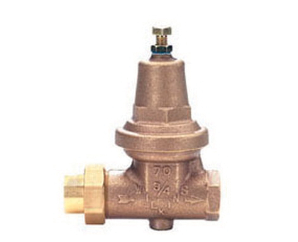In the world of household plumbing, there exists a small but mighty device that plays a crucial role in maintaining the integrity and longevity of your plumbing system: the pressure regulator. Often overlooked, this component is essential for ensuring that water pressure remains at safe and manageable levels throughout your home.

A pressure regulator, also known as a pressure-reducing valve (PRV), is a plumbing device designed to control and stabilize the water pressure coming into your home from the main supply line. It does this by reducing the high pressure often found in city water supplies to a safe level suitable for domestic use. Typical residential water pressure should ideally range between 40 to 60 pounds per square inch (psi). Without a regulator, water pressure can fluctuate wildly, potentially causing damage to pipes, fixtures, and appliances such as water heaters.
Protecting Plumbing Systems: Excessive water pressure can put undue stress on pipes, joints, and fixtures, leading to leaks, bursts, or premature wear and tear. A pressure regulator acts as a barrier against these risks by ensuring that pressure levels are within safe limits.
Preserving Fixtures and Appliances: Many household appliances and fixtures, such as water heaters, dishwashers, and washing machines, are designed to operate within specific pressure ranges. High water pressure can shorten their lifespan and increase maintenance costs. By maintaining optimal pressure, regulators safeguard these investments.
Conserving Water: Unregulated high pressure can cause faucets and toilets to leak, leading to water wastage. According to the Environmental Protection Agency (EPA), fixing household leaks can save homeowners around 10% on their water bills. Pressure regulators help prevent unnecessary leaks, promoting water conservation.
An old or malfunctioning pressure regulator can cause your water heater to leak. Here’s how:
While replacing the water heater itself is a significant step in maintaining your plumbing system’s efficiency, replacing or at least inspecting the pressure regulator is advisable to ensure optimal performance and longevity. With the new water heater in place, a faulty pressure regulator may lead to other appliances leaking or malfunctioning next.
A proactive approach to pressure regulation can help avoid potential problems such as water leaks, high utility bills, and premature wear on plumbing fixtures. Consulting with a professional plumber will provide you with expert guidance tailored to your specific plumbing setup and needs. They can inspect your current pressure regulator to assess its condition and functionality. They can also determine if it needs replacement based on its age, performance, and the specific requirements of your new water heater.
We are committed to providing top-notch water heater repair, installation, replacement, and maintenance services in the San Diego area. Whether you need a new installation, regular maintenance, or emergency repairs, we have the skills and experience to meet your needs.
Contact us today to schedule a service or learn more about our water heater services. Let us help you keep your water heater in peak condition for years to come.

Copyright © 2025. JG Water Heater – Plumbing Repair – jgwaterheaters.com. All Rights Reserved.